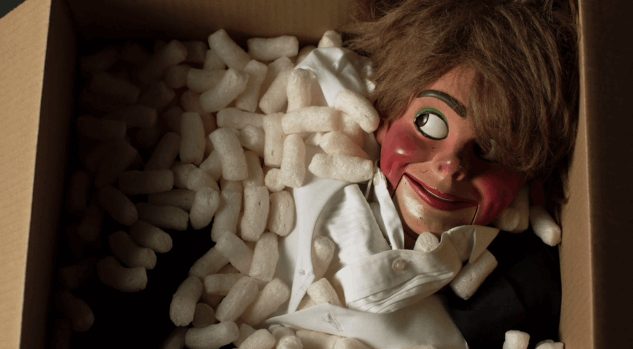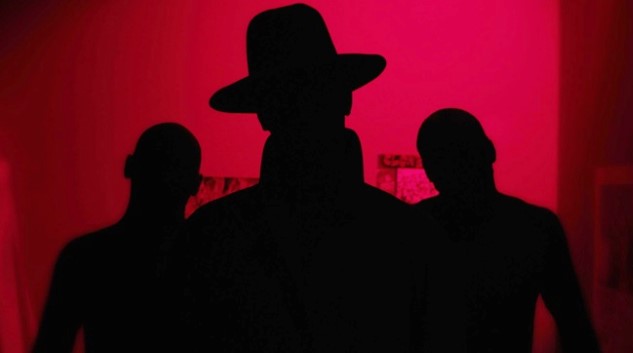Documentarian Rodney Ascher on the Searing Childhood Horrors of Primal Screen
Photos via Shudder Movies Features Rodney Ascher
Rodney Ascher knows the nature of fear. He’s studied its roots and its macabre, pop culture-inflected history. He’s seen that fear can’t always be explained or codified, although he’s given it his best effort. More than most people, he’s seen the truly personal nature of fear and phobia—the way that some people are terrified of objects, scenarios or sensations that would never even register as potentially scary to most people. Because in the end, fear is deep, mysterious and yes, “primal.”
Ascher is the director of several fascinating documentaries that touch on the realm of horror, 2012’s Room 237 and 2015’s The Nightmare, both of which are featured on Paste’s list of the best horror films streaming on Netflix. The first film generated significant buzz, and gathers together a group of truly unique individuals who have become obsessed with decoding “hidden meanings” to Stanley Kubrick’s landmark horror film, The Shining. Such theories range from “The Shining is actually about the genocide of Native Americans,” to “The Shining is about the Holocaust,” to “The Shining is Stanley Kubrick’s secret admission that he shot the fake Apollo 11 moon landing.” The Nightmare, on the other hand, is much more genuinely scary to watch, as it examines the phenomenon of sleep paralysis through the eyes of those affected, people who detail the horrific images they’re assaulted by on a nightly basis. It’s a chilling look into a condition that is still not well understood.
Ascher’s latest project, though, is called Primal Screen, a potential documentary series of sorts that was done in conjunction with horror streaming service Shudder. (You should also check out our ranking of the 100 best horror movies in the Shudder library..) It’s a concept that revolves around childhood terrors—the images and experiences that kids perceive that stick with them forever, that are permanently “burned onto their Primal Screen.” If there was ever a movie trailer or corporate jingle that sent you running out of the room as a child, that’s the kind of experience we’re talking about. There’s only one 30-minute entry right now, but Ascher is hoping the first will be well-received enough to create many more Primal Screen entries.
In honor of our first glance at Primal Screen, I had a conversation with Ascher about his films, his fascination with fear, and his unique purview as a documentary filmmaker.
Paste: Before Room 237, it looks like the titles of your short films suggest that many of them were also horror themed. Have you always been so passionate about horror?
Ascher: Well, it’s always been one of the top two or three things I’m fascinated in, along with mystery, comedy and experimental film. There are a couple of pools I’ve been diving into over the years.
Paste: What do you find fascinating about the roots of what frightens people?
Ascher: There’s something I like about combining the worlds of truth and fiction in documentary and letting them play off each other. A lot of it was probably trial and error. I came across something years ago when I was doing a short called The S From Hell about people who had a phobia of the Screen Gems logo as kids.
Paste: Really? A logo?
Ascher: Oh yeah. It’s absolutely a real thing. And the Screen Gems logo is only one of many that frightened people. There are people who will talk at length about the United Artists logo, the UA which slowly rotates out of blackness. Or the Viacom logo. All of these subjects, it’s a bottomless pit. But when I talked to these people about why that got under their skin, it revealed something personal, but also adjacent to horror. I love the notion that this stuff can have a profound effect on people—something as simple as a logo, or in the case of Primal Screen not even a horror movie but the trailer for a movie. It can set their gears spinning for years on end.
Paste: Room 237 is obviously what sort of got you noticed by a lot of people. I love it, but I feel like it’s misunderstood by a lot of people. I don’t know how a viewer could fail to realize that it’s not about the theories but about these obsessive people who come up with theories. Have you experienced a lot of misinterpretation of it?
Ascher: I absolutely saw people talk about the movie in a way I didn’t necessarily intend, but for this movie in particular that’s kind of perfect. If we’re talking about different ways that people reacted to The Shining, some of those are very unexpected ways, so to see the same thing happen with Room 237 is satisfying. It’s not “misinterpreted,” but differently interpreted.
Paste: When you’re sitting there for a long time with one of these subjects, do you find yourself thinking, “Well, this theory actually sort of makes sense”?
Ascher: Oh, every time, and it doesn’t take very long. I chose these people because what they had to say was especially compelling. I was always able to see The Shining freshly through each of their eyes. Then the fun becomes to see if the ideas are mutually exclusive from each other, or if they can somehow be reconciled with each other or with how most of the audience sees The Shining.

Paste: The one thing that frustrated me in Room 237 is that you never exposed any of the people to each other. I wanted to see them be confronted by each other’s theories. Did you consider that?
Ascher: I considered it. One thing that was interesting, though, was that after the film they started making their own connections and collaborations. Jeffrey and Bill, both of their readings of the film had to do with imperialism and genocide, so they dovetailed pretty nicely to form a faction. Several others started bouncing ideas off each other. Jay, who talks among other things about the moon landing, was resistant to some of the other ideas but eventually found a connection between where he was coming from and Jeffrey’s theories. My concern was that if we presented their beliefs against each other more directly that it would be like a demolition derby.
Paste: The Nightmare, on the other hand, I truly found terrifying to watch, because it’s something that could happen to you. The part where the guy says he had sleep paralysis for the first time immediately after being told about the phenomenon … that’s not what you want to hear before going to bed.
Ascher: It scared me too when I heard it, which made me think it was a pretty important moment for a documentary that wants to work as a horror film in some capacity. The thing about that subject is, sleep paralysis is so much more common than I ever realized. At the end of every screening I’d ask people to raise their hands if they’d ever experienced anything like what was depicted, and people would be shocked because it would be about 20% of every audience. I can’t talk to a group of more of five or six people about the topic without someone saying, “Oh my god, that happened to me.”
 The depiction of “shadow people” from The Nightmare.
The depiction of “shadow people” from The Nightmare.
Paste: Why do you choose to specifically stay so detached from the subjects? You’re never on screen, there’s no narration, no text on screen explaining topics. (Ed. note: Ascher does speak briefly in The Nightmare.)
Ascher: I guess it’s just my comfort level as a filmmaker. I just much more naturally go to this place, than something like Michael Moore. I feel terribly uncomfortable standing outside a house with a microphone, saying, “Okay, we’re going to go inside and talk to this guy.” I think people can figure it out pretty quickly. I was happy that in Primal Screen I could get away without ever naming subjects until the credits at the end, because to me you’re going to remember them as their stories: The kid who’s mom made dolls. The ventriloquist. The writer. That’s enough for the audience to pick up the pieces. I try to avoid redundancy.
Paste: How many episodes are there of Primal Screen?
Ascher: I’m gonna call it a pilot for a series. We shot one, but recorded interviews for a few more. If it’s popular, we’d love to do a bunch more.
Paste: What kind of other topics might it cover, in addition to ventriloquists/dolls in the first episode?
Ascher: I want to keep them at least a little bit secret, but there’s some good stuff about a particular corporate spokescharacter. There’s one about a fairly mainstream horror movie about a ghost, but the interesting thing there was that this woman’s father was a film critic, so it’s about how it affected their relationship. There was a really interesting interview I did with somebody that mostly about like, half-melted ice cream and blobs and things that are “gooey.” There’s also space to do all kinds of well known horror tropes such as twins or mirrors, but I look forward to being surprised by the unexpected ones.
Paste: These are truly strange and unique. Do you feel like childhood is essential to this? Is that the time when those kinds of images are most like to be “burned onto your primal screen?”
Ascher: In this project I think they’re most interesting when the exposure is early and a kid’s natural curiosity comes into play. When you come across something like that super young, it might have unexpected effects that ripple across your life. In Primal Screen of course, we’re able to go even deeper [than in The S From Hell], in the first episode into ventriloquism, how it touches on issues of identity and powers of the voice.
Paste: The obvious question here is, what is burned onto Rodney Ascher’s own Primal Screen?
Ascher: I think like in Room 237 and The Nightmare, I was struck by some of these same things as the people who are speaking, but perhaps not as dramatically. There were a couple of things that set me off, though.
I remember an episode of Fantasy Island where a guy was in love with like a mermaid, and there was a nighttime scene on a cliff as it was raining and thundering, and the mermaid was in shallow, rocky water below kind of beckoning to him to jump in. And it would clearly kill him if he did it, but what was so terrifying to me was not that she was a monster but that she was beautiful, and because I think he was fully aware that if he jumped he would die, but he wanted to do it anyway. I think as a kid it kind of opened me up to the idea that people can be so terribly self-destructive and make this choice, even if they know it’s destructive.
Jim Vorel is a Paste staff writer and resident horror guru. You can follow him on Twitter.
